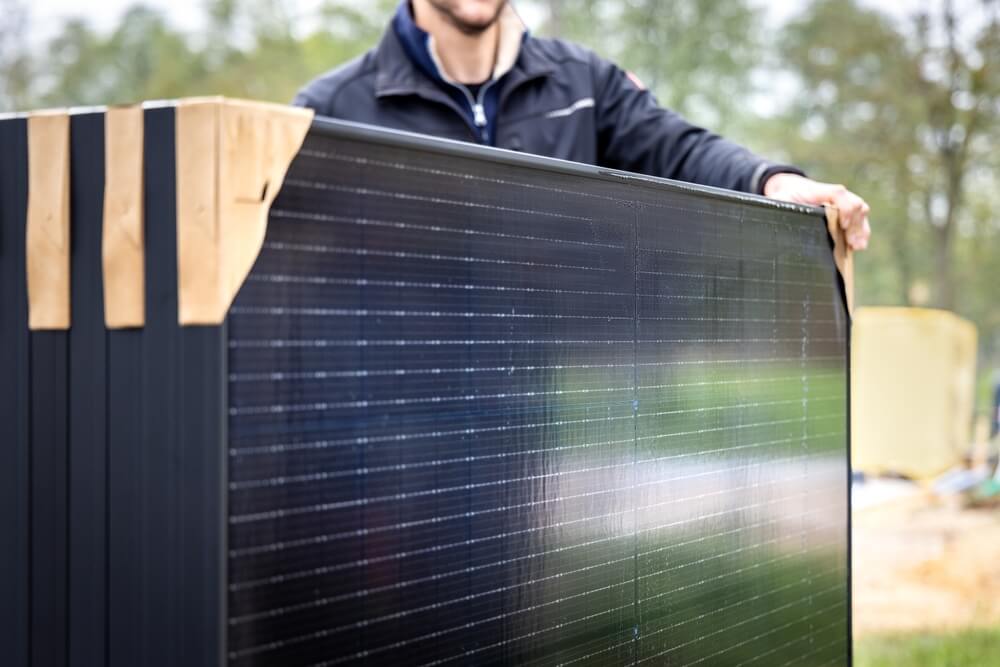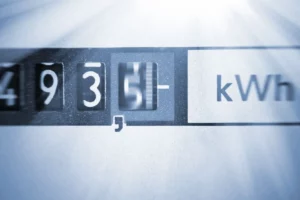As the world pivots towards sustainable energy, the solar tax credit emerges as another motivation, offering both environmental benefits and financial incentives. This article serves as your guide, when dealing with claiming, qualifying, and maximizing the advantages of the solar tax credit.
What is a tax credit?
A tax credit is a financial incentive provided by the government to encourage specific behaviors or activities that are deemed beneficial for individuals, businesses, or the broader economy. Unlike tax deductions, which reduce the taxable income amount, tax credits directly reduce the amount of tax owed. In essence, tax credits serve as a dollar-for-dollar reduction in the actual tax liability.
Tax credits are designed to promote certain behaviors or investments that align with public policy goals. Common types of tax credits include those for education expenses, energy-efficient home improvements, child care expenses, and, as in the context of our discussion, the solar tax credit.
What is the federal solar tax credit?
The federal solar tax credit, officially known as the Investment Tax Credit (ITC), is a financial incentive provided by the U.S. government to encourage the adoption of solar energy systems. This credit allows individuals and businesses to claim a percentage of the cost of installing a solar energy system as a credit on their federal income tax returns.
The primary goal of the federal solar tax credit is to promote the growth of solar energy usage and contribute to the development of a more sustainable and environmentally friendly energy landscape.
How does the federal solar tax credit work?
The federal solar tax credit operates by allowing taxpayers to claim a specific percentage of their qualified solar expenditures as a credit against their federal income tax. It’s important to note that the percentage can vary and is subject to change based on legislative decisions.
Additionally, the solar tax credit is non-refundable, meaning that while it can reduce your federal income tax liability to zero, any excess credit beyond your tax liability cannot be refunded.
What does the federal solar tax credit cover?
The federal solar tax credit covers a wide range of solar projects and technologies, making it inclusive for various solar energy installations. Eligible projects include residential solar panels, solar water heaters, and other solar technologies that meet specific safety and performance standards.
This coverage extends to both solar photovoltaic (PV) systems, which convert sunlight into electricity, and solar water heating systems, which use sunlight to heat water for residential use. The intent is to encourage individuals to invest in solar energy solutions that align with their specific energy needs.

What are the residential solar tax credit amounts?
As of the latest information available, the residential solar tax credit amounts vary based on the installation year. Here is a breakdown of the tax credit percentages for residential solar PV systems:
1. Systems Installed in 2020 and 2021:
- Eligible for a 26% tax credit.
2. Systems Installed Between 2022-2032:
- In August 2022, Congress passed an extension of the Investment Tax Credit (ITC), raising it to 30% for solar PV systems installed during this period.
3. Systems Installed on or Before December 31, 2019:
- Eligible for a 30% tax credit. This rate applies to systems installed before 2020.
4. Systems Installed in 2033:
- The tax credit decreases to 26% for solar PV systems installed in this year.
5. Systems Installed in 2034:
- The tax credit further decreases to 22% for solar PV systems installed in this year.
6. Systems Installed in 2035 and Beyond:
- The tax credit is set to expire, unless Congress renews it.
It’s important to note that there is no maximum amount that can be claimed under the residential solar tax credit. The percentages mentioned represent the portion of the total eligible cost of the solar energy system that can be claimed as a credit on your federal income tax return.
As tax laws are subject to change, it’s advisable to check for updates or consult with a tax professional to ensure accurate and current information when considering the residential solar tax credit for a specific installation year.
How To Qualify for the Solar Tax Credit
Who qualifies for solar tax credit? Qualifying for the Solar Tax Credit involves meeting specific criteria outlined by the government. Adhering to these qualification criteria ensures that you maximize the benefits of the Solar Tax Credit while meeting the specific requirements set by the government. Keep detailed records of your solar energy system installation and consult with a tax professional to ensure accurate and successful qualification for the tax credit.
Here are the key factors to consider:
Installation Year
To qualify for the Solar Tax Credit, the solar energy system must be installed and operational within the tax year you are claiming. Ensure that your installation aligns with the designated time frame for eligibility.
Ownership
The tax credit is applicable only to those who own the solar energy system. If you’ve financed the system through a lease or power purchase agreement (PPA), you may not be eligible. Ownership is a critical factor in determining qualification.
Residential Use
The solar energy system must be installed on a property used for residential purposes to be eligible for the tax credit. Commercial installations may have different incentives, but for residential purposes, the property must serve as a home.
Eligible Solar Technologies
The Solar Tax Credit covers various solar technologies, including solar photovoltaic (PV) systems (commonly known as solar panels) and solar water heaters. Ensure that the installed technology meets the required safety and performance standards to qualify.
No Income Limit
Unlike some tax credits, the Solar Tax Credit does not have an income limit. This makes the credit accessible to a broad range of taxpayers, regardless of their income level.
Not Claimed On A Previous Tax Return
You cannot claim the Solar Tax Credit for the same installation on a previous tax return. Ensure that this credit has not been previously utilized for the specific solar energy system you are claiming.
No Double Dipping
Avoid “double dipping” by claiming the same expenses for both the Solar Tax Credit and another business-related tax credit. Ensure that you are not overlapping incentives for the same installation, as this could lead to disqualification.

Solar Energy System Eligibility
Solar Energy System Eligibility encompasses various technologies, each with specific criteria for qualification. Understanding these specific eligibility criteria for solar water heaters and solar panels is essential for homeowners seeking to maximize the benefits of the Solar Tax Credit.
Explore the eligibility of two prominent solar technologies:
Solar Water Heaters
To qualify for the Solar Tax Credit, solar water heaters must meet certain standards and criteria. Here are key points to consider:
- Certification: Solar water heaters must be certified by the Solar Rating and Certification Corporation (SRCC) or an equivalent entity approved by the government. Certification ensures that the system meets industry-recognized safety and performance standards.
- Residential Use: The solar water heater must be installed on a property used for residential purposes to be eligible for the tax credit. Commercial installations may have different incentives, but for residential purposes, the property must serve as a home.
- Operational Requirements: The solar water heater must be operational and in use during the tax year for which you are claiming the credit.
Solar Panels (Photovoltaic Systems)
Solar panels, also known as photovoltaic (PV) systems, are a common and highly eligible technology for the Solar Tax Credit. Here’s what you need to know:
- Performance Standards: Solar panels must meet specific safety and performance standards to be eligible for the tax credit. This ensures that the system is capable of efficiently converting sunlight into electricity.
- Residential Use: Similar to solar water heaters, solar panels must be installed on a property used for residential purposes to qualify for the tax credit.
- Ownership: To claim the Solar Tax Credit, you must own the solar panels. Leased systems or those financed through power purchase agreements (PPAs) are typically not eligible for the credit.
- Installation Year: Ensure that the solar panels are installed and operational within the tax year you are claiming. The installation year is a crucial factor in determining eligibility.
How to Claim Solar Tax Credit
Wondering how to apply for solar tax credit? Applying for or claiming the solar tax credit involves several steps to ensure that you receive the maximum benefit for your investment in solar energy. Here’s a step-by-step guide on how to claim the Solar Tax Credit:
1. Install a Qualifying Solar Energy System
Ensure that the solar energy system you’ve installed meets the eligibility criteria for the Solar Tax Credit. This includes solar panels (photovoltaic systems) and solar water heaters, each with specific standards to meet.
2. Document Your Installation
Keep thorough records of the solar energy system installation, including invoices, receipts, and any certifications. Documentation is crucial for providing evidence of eligibility when claiming the tax credit.
3. Complete IRS Form 5695
Use IRS Form 5695, Residential Energy Credits, to claim the Solar Tax Credit. This form is specifically designed for residential energy-efficient property credits, including the Solar Tax Credit.
4. Calculate the Credit Amount
Calculate the amount of the tax credit by multiplying the eligible expenses by the applicable percentage. How to calculate solar tax credit? To date, the tax credit is generally 30% for solar installations between 2022 and 2032. Refer to the specific percentage based on your installation year.
5. Transfer the Credit to Form 1040
After completing Form 5695, transfer the calculated credit amount to the appropriate line on your Form 1040 or 1040NR when filing your federal income tax return.
6. Review IRS Instructions
Consult the latest IRS instructions for Form 5695 to ensure accurate completion. Tax laws can change, and it’s essential to use the most up-to-date information when filing your taxes.
7. Seek Professional Guidance
If you’re uncertain about the eligibility criteria, calculations, or the overall process, consider seeking guidance from a tax professional or accountant. They can provide personalized advice based on your specific circumstances. Make sure to also hire the best, legit solar installation company, such as Nivo Solar.
8. Submit Your Tax Return
File your federal income tax return, including the completed Form 5695 and any other required documentation, by the applicable deadline. Typically, tax returns are due by April 15th, unless an extension is requested.
9. Retain Documentation
Keep a copy of your tax return, Form 5695, and all supporting documentation for your records. This is important for future reference and may be requested in case of an audit.
By following these steps, you can successfully claim the Solar Tax Credit and enjoy the financial benefits of investing in renewable energy for your home. Always stay informed about any updates to tax laws and consult with professionals when needed to ensure accuracy in your tax filings.

How Other Incentives Affect the Federal Solar Tax Credit
Understanding how other incentives interact with the Federal Solar Tax Credit is crucial for maximizing your overall savings. Here’s a closer look at how state solar incentives and other incentives can impact the federal credit:
State Solar Incentives
1. Research State-Specific Programs:
Research state-level incentives for solar installations. Many states offer additional financial incentives, rebates, or grants to encourage residents to adopt solar energy. These incentives can complement the Federal Solar Tax Credit.
2. Check Renewable Energy Credits (RECs):
Some states have Renewable Energy Credit (REC) programs. RECs represent the environmental benefits of generating clean energy. Check if your state allows you to sell RECs associated with your solar energy system, providing an additional revenue stream.
3. Understand Net Metering Policies:
Net metering allows you to earn credits for excess energy your solar panels produce and feed back into the grid. Many states have net metering policies that can impact the financial return on your solar investment.
4. Consult Local Authorities:
Reach out to local authorities or energy agencies to stay informed about available state incentives. Programs may vary, and staying updated ensures you take advantage of all potential savings.
Other Incentives
1. Utility Rebates:
Check with your local utility provider for any rebate programs. Some utilities offer rebates for installing solar panels or other energy-efficient technologies. These rebates can further reduce the overall cost of your solar installation.
2. Federal and State Grants:
Look for federal or state grant programs that support renewable energy projects. While not as common as tax credits, grants can provide upfront financial assistance for your solar project.
3. Property Tax Exemptions:
In some locations, installing solar panels can lead to property tax exemptions. This means that the added value to your home from the solar installation may not increase your property taxes.
4. Local Financing Programs:
Investigate local financing programs that offer low-interest loans or other financial assistance for solar installations. These programs can make it more affordable to go solar.
5. Manufacturer Rebates:
Some solar equipment manufacturers offer rebates or discounts. Check with the manufacturer of your solar panels or other components to see if they provide any incentives.
6. Energy-Efficient Mortgages:
Explore energy-efficient mortgage programs that consider the added value of your solar installation when determining your loan eligibility. This can be an indirect way to save on financing costs.
7. Community Solar Programs:
Participate in community solar programs if available in your area. These programs allow you to benefit from solar energy without installing panels directly on your property.
Solar Tax Credit FAQs
Curious about the Federal Solar Tax Credit? Here are some quick answers to common questions:
When can I claim the federal solar tax credit?
You can claim the Federal Solar Tax Credit in the tax year during which your solar energy system is installed and operational. The installation year is crucial, and you should ensure that your system is up and running before claiming the credit on your federal income tax return.
Promptly filing for the tax credit in the appropriate tax year allows you to maximize the financial benefits of your solar investment.
How many times can you claim the solar tax credit?
Typically, you can claim the Solar Tax Credit once for each eligible solar energy system installation. If you have multiple qualifying solar projects, you can claim the credit for each one separately.
However, it’s essential to note that you cannot claim the same expenses for the same installation on multiple tax returns or for the same tax year. Ensure accurate record-keeping and documentation for each installation to facilitate the claiming process.
Is the solar tax credit refundable?
As of writing, the Solar Tax Credit is non-refundable. While the credit can reduce your federal income tax liability to zero, any excess credit beyond your tax liability cannot be refunded. However, any remaining unused credit can typically be carried forward to the following tax year. It’s important to review the latest tax regulations and consult with a tax professional for the most up-to-date information, as tax laws are subject to change.
Are You Ready To Switch To Solar?
The Federal Solar Tax Credit serves as a valuable incentive for individuals and businesses embracing sustainable energy solutions. By understanding the eligibility criteria, claiming procedures, and potential impacts of state and other incentives, you can navigate the solar landscape with confidence.
If you’re ready to make the switch to solar, consider consulting with professionals and exploring local programs, and don’t forget to take advantage of the expertise offered by leading residential solar installation companies in Houston like Nivo Solar. Switch to solar today!







